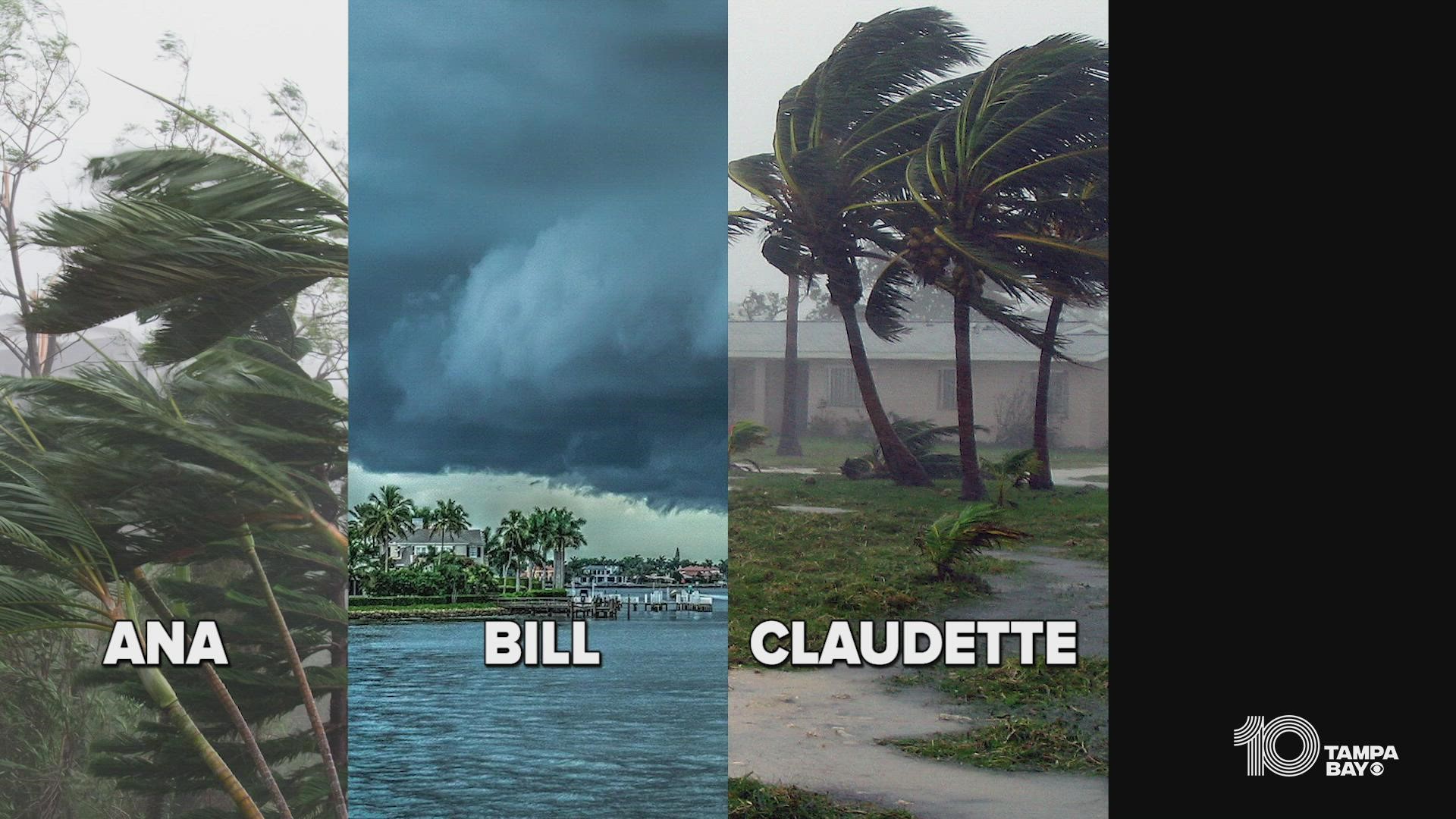TAMPA, Fla. — Have you ever wondered why tropical cyclones alternate between traditionally male and female names?
Let’s go back several decades. Before the 1940s, tropical cyclones were named after geographic locations, intensity, and the year (I.E the “Galveston Storm of 1900”). This simplistic system evolved later in the mid 20th century.
Back in the 19th century, South Sea Islanders girls' names were used by an Australian forecaster, who later named storms after politicians he despised. According to the National Oceanic and Atmospheric Administration, the concept later inspired novelist George Stewart, whose 1941 book "Storm" included a junior meteorologist who named Pacific extratropical storms after former girlfriends.
"The novel was widely read, especially by US Army Air Corp and Navy meteorologists during World War II," the NOAA explained. "When Reid Bryson, E.B. Buxton, and Bill Plumley were assigned to Saipan in 1944 to forecast tropical cyclones they decided to name them after their wives."
By 1945, the armed services had gone ahead and adopted a list of traditionally-female names for typhoons in the Pacific. Yet, they couldn't convince the U.S. Weather Bureau to adopt the practice for Atlantic storms.
"Starting in 1947, the Air Force Hurricane Office in Miami began designating tropical cyclones of the North Atlantic Ocean using the Army/Navy phonetic alphabet (Able-Baker-Charlie-etc.) in internal communications. During the busy 1950 hurricane season there were three hurricanes occurring simultaneously in the Atlantic basin, causing considerable confusion," the NOAA said.
According to the agency, it was then that meteorologist Grady Norton began using the Air Force's name system. That worked for a little while until a new international phonetic alphabet was adopted in 1952, which made everything confusing again. So, in 1953, the Weather Bureau followed the Pacific tradition of using women's names, the NOAA explained.
It is not entirely clear why leaders kept up the theme of only using traditionally-female names. Travel website Atlas Obscura reports that a supposed reason for this naming feature “was due in part to [women’s] characteristics — 'unpredictability' for example." While it's entirely possible that's just a legend, on-air forecasting was a career dominated by men in that era. And, male forecasters would reportedly sometimes use sexist clichés to describe a storm’s behavior. With the rise of the feminist movement in the 1960s and 70s, this culture was bound to face some backlash.
Unsurprisingly enough, the nomenclature system did not go over well with some American feminists. According to History.com, notable Miami National Organization for Women member Roxcy Bolton reprimanded the National Weather Service for its naming practices by stating that “women are not disasters, destroying life and communities and leaving a lasting and devastating effect."
A few scientists argued that hurricanes named after men would not be taken as seriously as ones with female names. After years of campaigns and pressure from feminist groups, the government eventually decided to include men in the list of names. By 1979, Hurricane Bob formed, making it the first male name in the new system.
The naming system continued to evolve through the 80s and 90s. Modern-day names of tropical storms have been modified to represent the region. In the Atlantic Basin, for example, female and male names are of English and Spanish decent in order to represent the countries that could be affected (Like 2021’s Elsa, Fred, and Henri).
Storms are not named as they form. Names are chosen several years ahead of time, and the lists are recycled every six years. A name is only “retired” if the storm is particularly deadly or catastrophic, like Hurricane Katrina in 2005 or Dorian from 2019.

